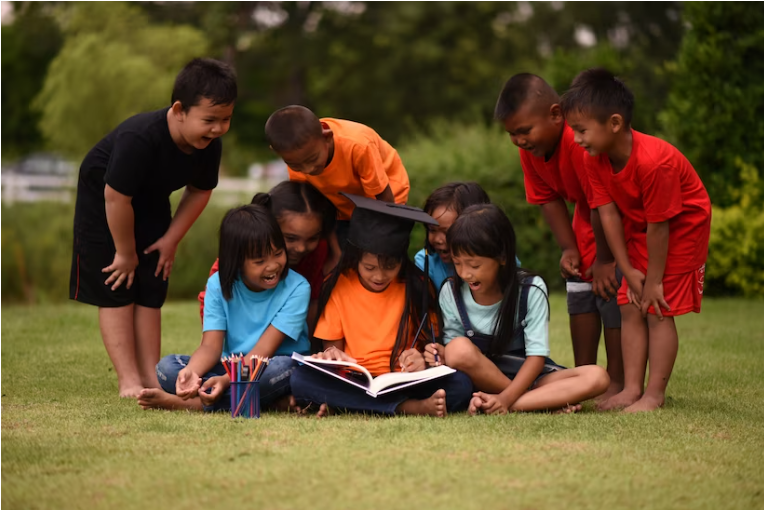
The Importance of Creativity in Children’s Learning Process: Developing Imagination and Innovation
The Importance of Creativity in Children’s Learning Process: Developing Imagination and Innovation is a creative process that belongs to individuals. The creative process certainly requires full guidance from educators to students. Sometimes creativity is also related to the people around it.
Developing Imagination and Innovation
Develop Imagination and Innovation
Creativity can automatically develop if schools provide opportunities for children to be creative according to their age. Drawing, painting, singing, dancing, and constantly talking to people around them are forms of creativity that children have and must be developed.
Creativity in learning has a very broad meaning because it depends on the context in which creativity is applied. Talking about creativity in learning, then it enters into the ideas and imaginations that are created in the learning process.
In learning creativity has the meaning of creating something good or an idea in the learning process. In the learning process, creativity is also seen as very special which is different from other children’s thinking.
Creativity has an important role in learning, one of which is increasing self-confidence when in a social environment. With creativity, children can also explore thinking skills so that various imaginations or useful ideas emerge. The importance of creativity is as follows:
- Children can easily express ideas or ideas without feeling burdened by the environment around them.
- It is also good to be able to easily solve problems that will be faced and have been faced.
With excellent creativity, we as educators can appreciate creativity which indirectly educates children to always appreciate the results of other people’s ideas or ideas. Creativity also helps children learn to find new things that can be used as innovations in learning.
Creativity also helps to achieve success because children can have brilliant ideas with creativity. One of the keys to student success in school is the teacher who carries out his role to the fullest. Because, this can train students to be creative and supported by teachers who have high creativity as well.
Imagination and innovation that children have must be developed by holding innovations in learning, even though in principle it is not easy. Teachers are not easy to be creative because not all teachers have the same level of creativity. Although creativity can be developed by teachers, the development process starts from teachers who are not ashamed to learn and new friends who are seen as creative with learning. Creativity can also be discussed with colleagues about how and how to do it.
Factors that Inhibit Creativity, Imagination and Learning
Teacher’s side
There are many factors that can hinder children’s creativity in learning. When viewed from the teacher’s point of view, the factors that impede learning are as follows:
- Teachers still instill the principle that students listen to the teacher and not vice versa, so this factor can hinder the students’ own creative imagination and learning.
- Teachers also carry out evaluations of cognitive learning outcomes that only emphasize correct answers. This evaluation is an evaluation that does not consider the task completion process. In another sense, it does not observe how much students are involved in completing their assignments.
- Another factor is the limited learning facilities provided by the school, thus influencing students to explore their learning environment.
The existing factor is the financial factor which becomes an obstacle to the emergence of creativity from students. In general, children will feel afraid to express their ideas because teachers do not understand the developmental needs of children at that age.
The existence of these factors makes students appear as if they are not creative even though students have potential from birth. Because the learning environment that is not supportive makes students unable to develop imagination properly to become more creative individuals.
From a Student’s Point of View
When viewed from the perspective of students, there are certainly many factors that influence the creativity of students, including the following.
- The first factor is the habit pattern at home which is super strict because everything that children do while they are at home has been scheduled by their parents. So that parents do not necessarily understand how children think at their age because they still follow the point of view of the parents themselves. In other words, the stage of following the parents’ point of view is the inhibiting stage of the child’s creativity.
- The second factor is the lack of self-confidence or self-confidence that students have.
- Children who have feelings of fear of being wrong or being criticized by others. This factor concerns parents educating their children at home, because children’s time is definitely spent at home rather than at school. This makes the conditions created at home will be brought to school, so that the impact on children’s creativity is low.
Creativity in learning has a positive impact in various contexts of children’s lives. Children’s creativity must be valued more in order to increase self-confidence when joining a social environment. Creativity is a necessity because it can actualize itself, so parents can’t get in the way.
In general, teachers and parents get in the way by not giving space or opportunities to think and express ideas or ideas that are seen as different from other children.





